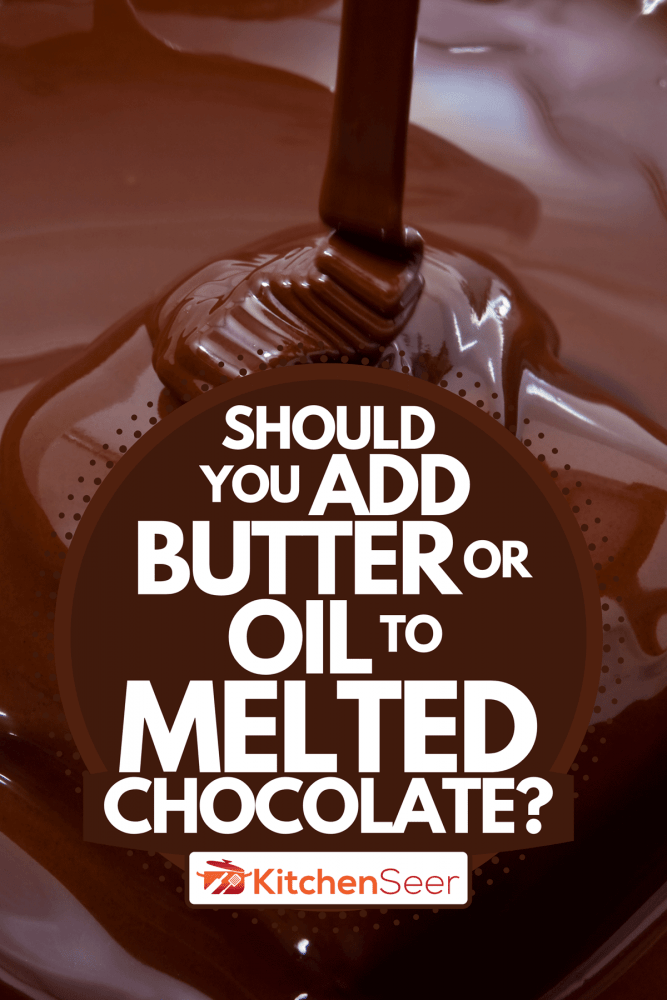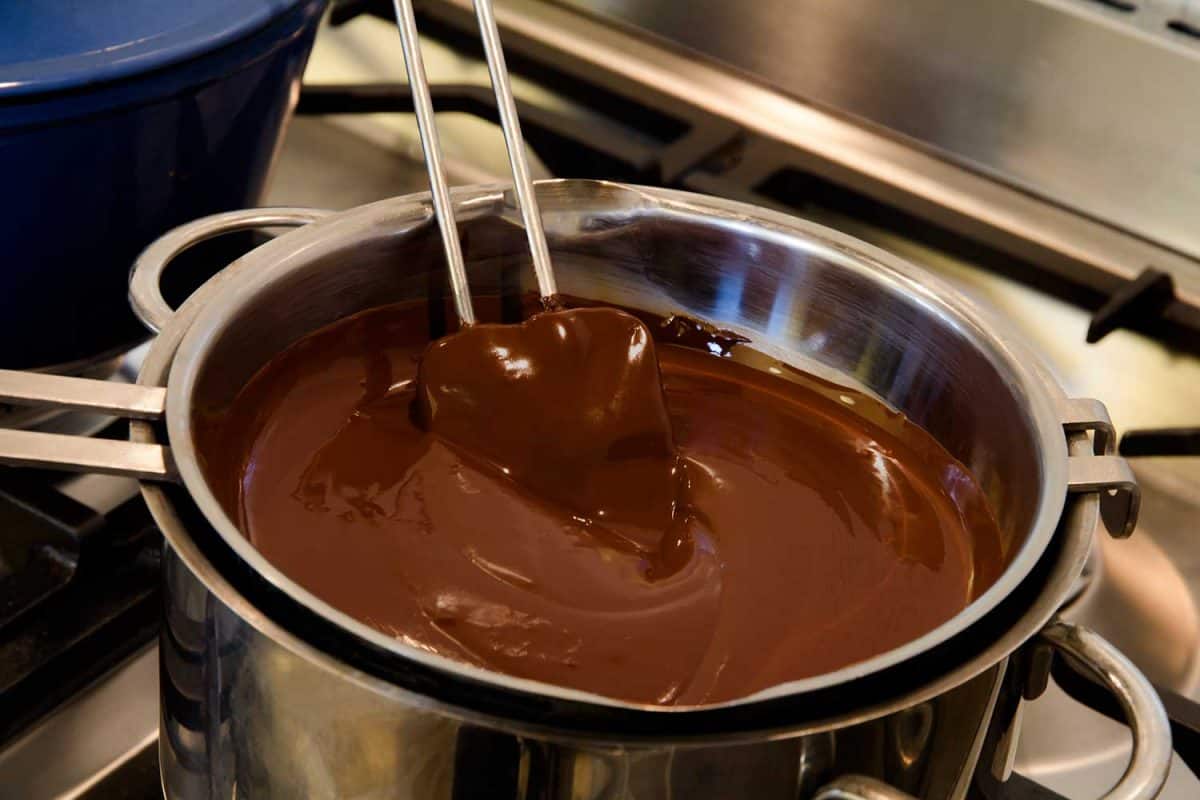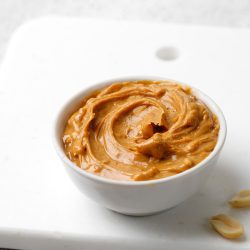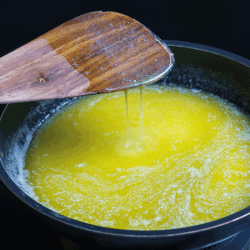Melting chocolate can be confusing when first learning how. There are several ways to melt chocolate and some differences in how to make it. Some variations, like whether you melt your chocolate in the microwave or on the stove, won't change your result very much. While other methods, like adding butter or oil, will give you a slightly different result than melting chocolate alone. Neither method is wrong, so how do you know if you're supposed to be adding butter or oil into your chocolate when you melt it? We've done the research and know whether butter or oil is something you need to add to your melted chocolate.
You should add butter or oil when melting chocolate if it's being used for a dipping sauce, it's being used in baking or being combined with other ingredients, or if you're trying to save chocolate that has overheated or seized.
Since neither method is more correct than the other, going forward, we'll look at why these situations are best for adding butter or oil. We'll also answer a few other questions, such as how to save melted chocolate if a mistake happens and different methods to melt chocolate.

How to Add Butter or Oil to Chocolate
When you are adding butter or oil to chocolate, it is best not to use cold ingredients. This can cause the chocolate to cool too rapidly and then seize or get lumpy. It's also best to melt the chocolate alongside any butter or oil. However, adding in small amounts of butter, oil, or even warm cream after the chocolate is melted is not the end of the world. This is actually a great way to thin your chocolate to the desired consistency. When thinning your chocolate, remember to add small amounts of butter or oil until the desired consistency is reached.
What does adding butter to chocolate do?
When you add butter, or oil, shortening, or cream, to chocolate, you are essentially adding fat. The increased fat content is what causes the melted chocolate to change slightly. The most noticeable of the differences is a shinier gloss when the chocolate hardens. It also helps the chocolate melt more smoothly and slightly lowers its hardening temperature.
Mixing chocolate melted with butter becomes easier to mix or combine with any other additional ingredients. Finally, adding butter is a good way to improve the taste and texture of your melted chocolate.
What kind of oil do you use to melt chocolate?
When you're using oil for thinning your chocolate, it's very important to use a taste-free vegetable, canola, or coconut oil. It's best to have an oil that has a more neutral flavor that won't affect the chocolate taste. These rules are generally the same for when you're melting chocolate. Stick with a taste-free, neutral oil unless your recipe specifically asks for a certain type of oil.
Why does melted chocolate go lumpy?

Chocolate that has been melted properly is smooth and glossy. So, if your melted chocolate looks lumpy, clumpy, and even gritty, then you probably have seized chocolate. When you melt chocolate, its fat cocoa butter and dry particle sugar separate evenly, giving it a smooth texture. If even a small amount of water is introduced, the dry particles get wet, and that's what causes the chocolate to become lumpy and clumpy.
Fixing Seized Chocolate
Before you start melting chocolate, it's very important to make sure that your work area is completely dry. Even a few drops of water from a drying bowl can cause your chocolate to seize. Fortunately, it is still possible to fix chocolate if this happens to you. You can save seized chocolate by adding in more water or another type of liquid, such as oil. It's very important to add water or oil in small amounts to fix seizing and always mix thoroughly before adding more.
Lumps can also occur when melted chocolate is overheated. However, overheated chocolate has a muddy consistency and is solved in a slightly different way.
What do you do when melted chocolate is too thick?
If your chocolate is thick and has lost its silky melted chocolate shine, then you're dealing with chocolate that has been overheated. When melting, milk and white chocolates shouldn't exceed 110 degrees Fahrenheit, while dark chocolate shouldn't exceed 120 degrees Fahrenheit. This is an easy mistake to make as exceeding these temperatures is very easy when using either the microwave or when using boiling water to melt chocolate.
The best way to avoid overheating your chocolate is to cook in intervals when using the microwave and keep your water below boiling when using a double boiler. Using an instant thermometer is also a great way to keep an eye on the temperature of your chocolate. Click here to see a candy/confection thermometer on Amazon.
Fixing Overheated Chocolate
Like seized chocolate, it is also possible to fix chocolate that's overheated. Your first step is to make sure that your chocolate is removed from any heat source. Once you've done that, it's time to cool everything down. You can cool chocolate by adding chunks of room temperature butter or solid chocolate chunks to your melted chocolate. Then, stir constantly until thoroughly mixed. The cooler temperature of the butter and/or chocolate will help the melted chocolate cool down slowly.
If things still look thick or lumpy after this, you can try to strain your chocolate with a sieve. If even that doesn't help, add a spoonful of vegetable oil or melted vegetable shortening, and stir until thoroughly mixed. Click here to see a sieve on Amazon.
How to melt chocolate in the microwave?
Using a microwave is a faster and easier way to melt chocolate. It's very important to keep a close eye on your chocolate when you're using this method. The high power of a microwave can easily cause chocolate to overheat and burn. To melt chocolate, follow the following steps:
- Break, cut, or chop the chocolate into chunks and small pieces.
- Place chocolate into a microwave-safe bowl and place, uncovered in the microwave.
- Heat chocolate for 20- to 30-second intervals, carefully removing and thoroughly stirring after each interval.
- Add butter or oil when chocolate looks mostly melted, and stir thoroughly.
It's best to remove chocolate from the microwave before it looks completely done because the chocolate will continue to melt after leaving the microwave. For this method, it's best to add butter and oil at the very end. Oil isn't safe to heat in the microwave, and butter doesn't melt at the same temperature chocolate does. While you can add butter in towards the beginning, it has a greater chance of burning.
How do you melt chocolate on the stove?

Melting chocolate on the stove takes longer than it would in the microwave. Double boiling, in general, is great for cooking or melting things slowly, which is perfect for chocolate. This method gives you a better chance to avoid burning or overheating your chocolate.
To melt chocolate on the stove, follow these steps:
- Fill a pot or double boiler with a few inches of water and heat to below boiling.
- Fill a heat-proof bowl with broken-up pieces and chunks of chocolate and any butter or oil.
- Place the bowl on top of pot and mix frequently.
- Remove chocolate from heat once fully melted.
When using the double boiling method, it is especially important to make sure that you don't accidentally get water into the chocolate. Click here to see LaPatisserie double boiler on Amazon.
Before You Go
Knowing how to make chocolate is important knowledge to have for any kitchen user. Butter or oil is great when making dipping sauces or thinning liquified chocolate. They're also perfect for attempting to fix seized or overheated chocolate. Just remember that extra fat lowers the hardening temperature of chocolate which can affect some recipes.
You may also be interested in:
Bain-Marie Vs. Double Boiler: What You Need To Know
How To Make Large Amounts Of Hot Chocolate
Is A Double Boiler (Bain Marie) Supposed To Touch The Water?





![Delicious square shaped pure chocolates, Can Chocolate Get Moldy? [And How To Store It]](https://kitchenseer.com/wp-content/uploads/2022/03/Delicious-square-shaped-pure-chocolates-250x250.jpg)




I made rainbow cookies every year. I have melted chocolate ( semi sweet morsels) both ways….double boil and microwave. When I cut chocolate it always cracks. How do I prevent this?
Don’t know if you are going to see this, but I had that problem too. Now I score the chocolate with my knife before it sets so that I can more easily cut it and it won’t crack.